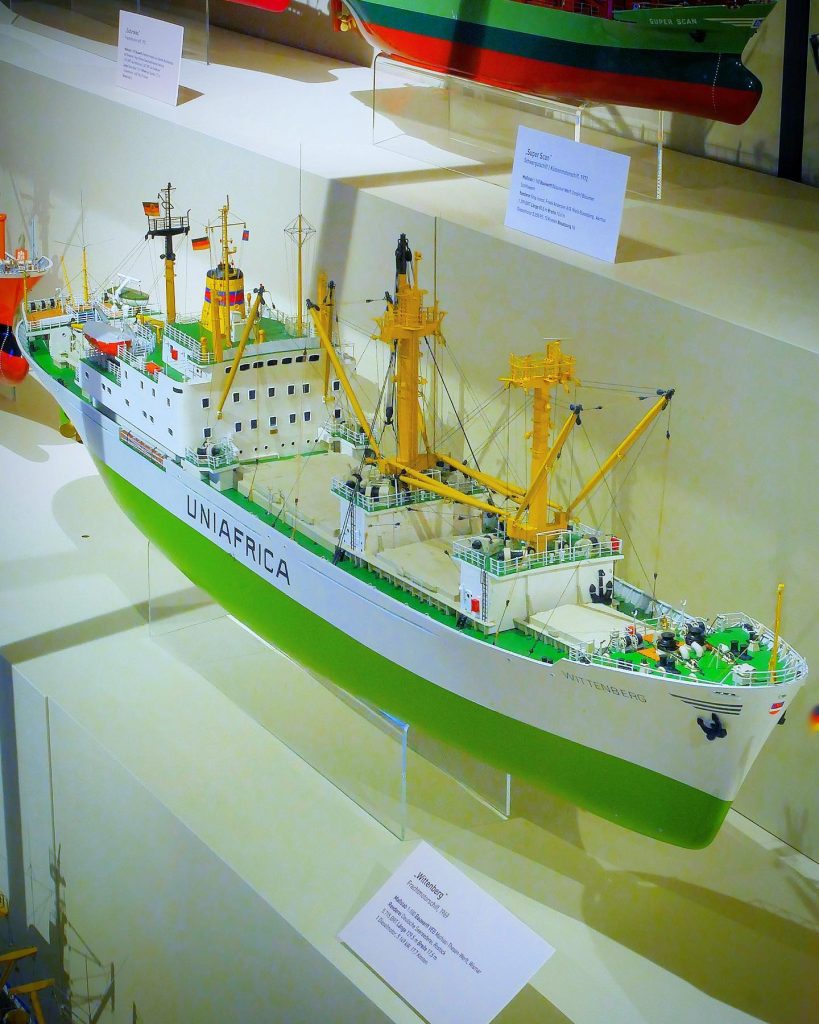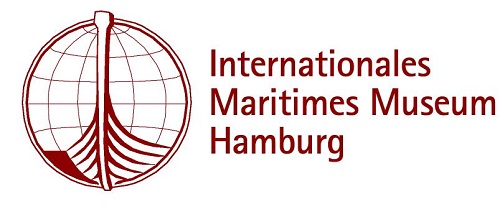
General cargo ship Wittenberg. This magnificent model of her was built in a scale of 1:100 by Gottfried Heinrich. It stands in our exhibition on modern maritime logistics, on deck 6 of the museum.
The Uniafrica Line was a shipping project that was created in the early 1960s by the state-owned shipping companies of the GDR (Eastern Germany) and Poland. The companies, that are still active today, were the Polska Żegluga Morska (PŻM, also known as Polsteam) founded in 1951 in Sczcecin and the Deutsche Seerederei, founded in 1952 in Rostock. After the reconstruction that had to follow World War II and in the context of the Cold War, the Uniafrica Line was an enterprise that aimed to profit from the growing commerce with the West African coast. But the ships that the line operated after its creation had problems to serve the variety of African ports they had to. Some of these ports were too small for the ships or they were just difficult to access. Furthermore, most lacked crane systems to load/unload the ships. That is why the class of ships known as the Type Afrika were conceived and built.
This 6 sisters were designed and built at the Mathias-Thesen-Werft shipyard in the German Baltic city of Wismar. The project was started in 1965 and all ships were delivered between 1969 and 1971. Their names were, in order of delivery: “Wismar”, “Sonneberg”, “Wittenberg”, “Federico Joliot-Curie”, “Stolberg” and “Fürstenberg”. They were all extremely flexible general cargo ships, built to transport almost any kind of goods between any ports. The ships were 129 m long and 17 m wide, with a deadweight tonnage of 5,515. They had 4 loading bays with specially large hatches that made the operations faster and more efficient. Beside that they had two refrigerated chambers for perishable goods and two tanks to transport liquids as bulk (usually oil or wine). They had a complex system of cranes including 12 regular cranes that could carry between 5 to 14 tons and one heavy duty crane with a capacity of up to 59 tons. They had a top speed of 16 knots and were operated by a crew of 35.
The ships all were on duty for the Uniafrica line until the fall of the Eastern Bloc. The Deutsche Seerederei sold them all between 1991 and 1992. Since the necessities of the shipping industry had changed a lot over the years, all six sisters however were scrapped by 1997.
That was also the case for the 3rd sister, the “MS Wittenberg”. Completed in 1969, she was sold in 1992. The ship was renamed “Su Run” and served several companies until sent for scrapping to Calcutta in 1997.
This magnificent model of her was built in a scale of 1:100 by Gottfried Heinrich. It stands in our exhibition on modern maritime logistics, on deck 6 of the museum.
